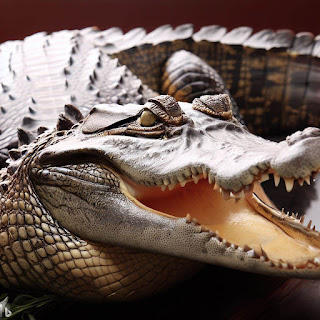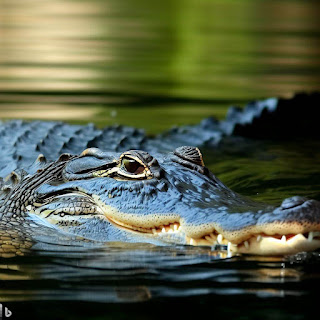Alligator/Alligator Florida living, breathing, spent time on land and water physical characteristics, running speed, swimming speed, hunt, danger, lifespan, regions.
Alligator:
The term "alligator" is derived from the Spanish phrase "el lagarto," which means "the lizard". Alligators are closely related to crocodiles, but they can be distinguished by their U-shaped snouts and their overbites.
Types of Alligators:
American alligators (Alligator mississippiensis) and Chinese alligators (Alligator sinensis) are the two types of alligators that are still around today.
American alligator:
Chinese alligator (Alligator sinensis):
It's one of the tiniest crocodiles around. The Chinese alligator is considerably smaller than its American counterpart. They inhabit the middle and east of China.
Length and weigh:
American alligator:
It is North America's biggest reptile, with adults typically reaching lengths of 9-13 feet and weighing 200-500 pounds. However, some individuals can grow much larger, with the largest recorded alligator being 19 feet long and weighing over 1,000 pounds.
It reaches a length up to 2.1 meters (7 ft) and weight up to 45 kilograms (100 lb) as an adult.
Physical Characteristics:
American alligators are dark brown or olive green in color, with a lighter underside. They have a broad, U-shaped snout and a powerful tail.
Chinese alligators are fully armored, and a dark grey or black color.
Diet of Alligators:
American Alligators are Carnivores eat fish, turtles, snakes, birds, and other mammals and birds. They hunt by hiding and waiting for their prey to come close before attacking.
Chinese Alligators are opportunistic feeders, primarily eating fish, turtles, snakes, birds and invertebrates.
Alligators are ectothermic:
Alligators are ectothermic, which means that they must constantly seek out new ways to keep warm. They prefer to sleep throughout the night and be active during the day.
How fast can Alligator Swim?
Alligators are excellent swimmers; American alligators can reach speeds of up to 20 miles per hour and Chinese alligators can reach up to 15 miles per hour in short bursts. They swim with the help of their muscular tails and their webbed feet for steering. Alligators are also able to hold their breath for up to 2 hours, which allows them to stay underwater for long periods of time while hunting for prey.
Here are some interesting facts about alligator swimming:
- Alligators can swim in both fresh and saltwater.
- They use their tails to create a powerful vortex that helps them to swim faster.
- They can swim backwards, which can be helpful for escaping predators.
- Alligators are often seen swimming in groups, which can help them to hunt more effectively.
How fast can Alligator run?
Alligators are not as fast on land as they are in water, but American alligators can still reach speeds of up to 11 miles per hour and Chinese alligators can reach up to 8 miles per hour in short bursts. They use their powerful legs and tails to propel themselves forward, and their heavy bodies help them to maintain their balance.
Here are some interesting facts about alligator running:
- Alligators can only run for short distances before they tire.
- They are not very agile runners and they are easily tripped.
- They are more likely to run if they are cornered or feel threatened.
- Alligators have been known to outrun humans in short distances, but this is rare.
Lifespan:
Alligators can live for up to 100 years.
Here are some interesting facts about alligators:
- The American alligator is officially recognized as Florida's state reptile.
- The Chinese alligator is the world's most endangered crocodilian.
- The Chinese alligator is the only extant alligator species not native to the Americas.
- Chinese alligator is sometimes called the "muddy dragon" in Chinese.
- Alligators are not aggressive towards humans unless they are provoked.
I hope this article is helpful for you, if you like my article please comment in comment box.









Post a Comment